|
Rome
(Italian and Latin: Roma) is the capital city of
Italy, and the country's largest and most populous comune,
with about 2,5 millions residents (3,8 millions
considering the whole urbanised area, as represented by
the Province of Rome). Capital of the Lazio region of
central-eastern Italy, Rome is located across the
confuence of the river Aniene into the Tiber. With a
gross domestic product of €97 billion in the year
2005, the comune of Rome produced 6.7% of Italy's
GDP, which is the highest proportion of GDP produced by
any single Italian comune. The current Mayor of
Rome is Walter Veltroni.
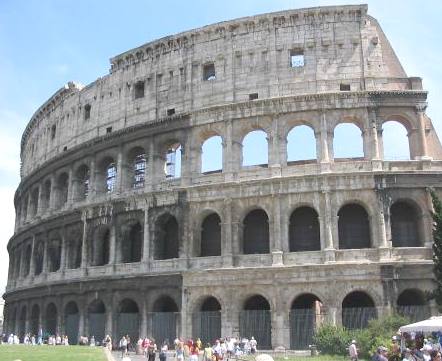
Roman
Colosseum
Founded
on April
21, 753 BC by the twins Romulus and Remus, according to
legend, Rome was once the capital of the Roman
Empire,
the most powerful, largest and longest-lasting empire of
classical Western civilisation; after the Western Roman
Empire fell in 476, it became the seat of the Pope and
centre of the Catholic Church, as well as capital of the
Papal States. Rome was conquered by the newly unified
Kingdom of Italy in 1870, witnessed the rise of Italian
fascism, and finally became capital of the current
Italian Republic and one of the largest cities of the
European Union. The Vatican City is still contained as a
sovereign enclave within the city territory.
Rome,
whose city centre is a UNESCO world heritage site
hosting some of the world's best known works of art and
monuments, is also called "la Città Eterna"
(the Eternal City), "l'Urbe" (Latin for
"the City" as an antonomasia) and "la
città dei sette colli" ("the city of the
seven hills").
GEOGRAPHY
Location
Rome is in the Lazio region of central Italy on the Tiber river
(Italian: Tevere). The original settlement developed on hills that faced onto a ford beside the Tiber Island, the only natural ford of the river in this area. The Rome of the Kings was built on seven hills: the Aventine Hill, the Caelian Hill, the Capitoline Hill, the Esquiline Hill, the Palatine Hill, the Quirinal Hill, and the Viminal Hill. Modern Rome is also crossed by another river the Aniene which flows into the Tiber north of the historic
centre.
Although the city center is about 24 kilometres (15 mi) inland from the Tyrrhenian
Sea, the city territory extends to the shore, where the south-western district of Ostia is located. The altitude of the central part of Rome ranges from 13 metres (43 ft) above sea level (at the base of the Pantheon) to 139 metres (456 ft) above sea level (the peak of Monte
Mario). The Comune of Rome covers an overall area of about 1,285 square kilometres (496 sq mi), including many green areas.
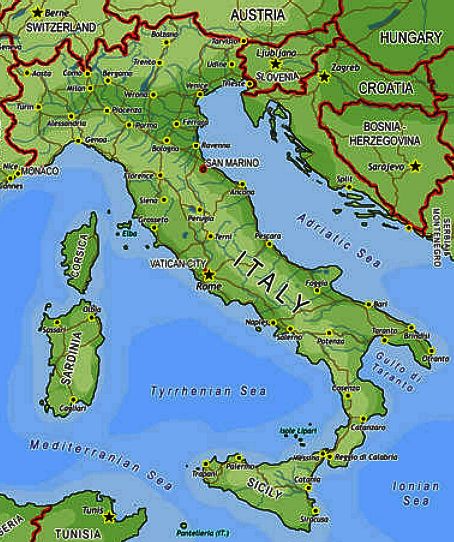
Topography
Throughout the history of Rome, the urban limits of the city were considered to be the area within the city walls. Originally, these consisted of the Servian Wall, which was built twelve years after the Gaulish sack of the city in 390 BC. This contained most of the Esquiline and Caelian hills, as well as the whole of the other five. Rome outgrew the Servian Wall, but no more walls were constructed until almost 700 years later, when, in 270 AD, Emperor Aurelian began building the Aurelian Walls. These were almost 19 kilometres (12 mi) long, and were still the walls the troops of the Kingdom of Italy had to breach to enter the city in 1870. Modern Romans frequently consider the city's urban area to be delimited by its ring-road, the Grande Raccordo Anulare, which circles the city centre at a distance of about 10 km.
The Comune of Rome, however, covers considerably more territory and extends to the sea at Ostia, the largest town in Italy that is not a comune in its own right. The comune covers an area roughly three times the total area within the Raccordo and is comparable in area to the entire provinces of Milan and Naples, and to an area six times the size of the territory of these cities. It also includes considerable areas of abandoned marsh land which is suitable neither for agriculture nor for urban development.
As a consequence, the density of the comune is not that high, its territory being divided between highly urbanised areas and areas designated as parks, nature reserves, and for agricultural use.
Climate
Rome enjoys a Mediterranean climate (Köppen climate classification:
Csa), with mild, humid winters and warm, dry summers.
Its average annual temperature is above 20 °C (68 °F) during the day and 10 °C (50 °F) at night. In the coldest month – January, the average temperature is 12 °C (54 °F) during the day and 3 °C (37 °F) at night. In the warmest months – July and August, the average temperature is 30 °C (86 °F) during the day and 18 °C (64 °F) at night.
December, January and February are the coldest months, with average temperatures around 12.5 °C (54.5 °F) during the day and 3.6 °C (38.5 °F) at night. Temperatures generally vary between 10 and 15 °C (50 and 59 °F) during the day and between 3 and 5 °C (37 and 41 °F) at night, with colder or warmer spells occurring frequently. Snowfall is rare but not unheard of, with light snow or flurries occurring almost every winter, generally without accumulation, and major snowfalls once every 20 or 25 years (the last one in
2012).
The average relative humidity is 75%, varying from 72% in July to 77% in November. Sea temperatures vary from a low of 13 °C (55 °F) in February and March to a high of 24 °C (75 °F) in August.
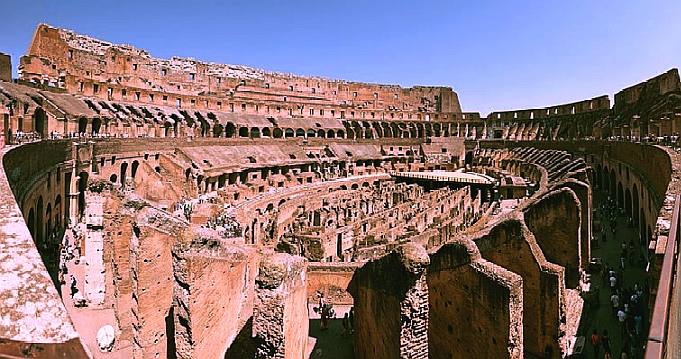
Photo by Paolo Costa
Baldi
RELIGION
Rome is predominantly Roman Catholic, and the city has been an important centre of religion and pilgrimage for centuries, the base of the ancient Roman Religion with the pontifex maximus and later the seat of the Vatican City and the pope. Before the arrival of the Christians in Rome, the Religio Romana (literally, the "Roman Religion") was the major religion of the city in classical antiquity. The first gods held sacred by the Romans were Jupiter, the most high, and Mars, god of war, and father of Rome's twin founders, Romulus and Remus, according to tradition. Other gods and goddesses such as Vesta and Minerva were honoured. Rome was also the base of several mystery cults, such as Mithraism. Later, after St Peter and St Paul were martyred in the city, and the first Christians began to arrive, Rome became Christian, and the St. Peter's Basilica was first constructed in 313 AD. Despite some interruptions (such as the Avignon papacy), Rome has for centuries been the home of the Roman Catholic Church and the bishop of Rome, otherwise known as the pope.
Despite the fact that Rome is home to the Vatican City and St. Peter's Basilica, Rome's cathedral is the Basilica of St. John Lateran, located to the south-east of the
city-center. There are around 900 churches in Rome in total, aside from the cathedral itself, some others of note include: the Basilica di Santa Maria Maggiore, the Basilica of Saint Paul Outside the Walls, the Basilica di San Clemente, San Carlo alle Quattro Fontane and the Church of the Gesu. There are also the ancient Catacombs of Rome underneath the city. Numerous highly important religious educational institutions are also in Rome, such as the Pontifical Lateran University, Pontifical
Biblical Institute, Pontifical Gregorian University, and Pontifical Oriental Institute.
The territory of Vatican City is part of the Mons Vaticanus, and of the adjacent former Vatican Fields, where St. Peter's Basilica, the Apostolic Palace, the Sistine Chapel, and museums were built, along with various other buildings. The area was part of the Roman rione of Borgo until 1929. Being separated from the city on the west bank of the Tiber river, the area was an outcrop of the city that was protected by being included within the walls of Leo IV, later expanded by the current fortification walls of Paul III/Pius IV/Urban VIII.
When the Lateran Treaty of 1929 that gave the state its present form was being prepared, the boundaries of the proposed territory was influenced by the fact that much of it was all but enclosed by this loop. For some tracts of the frontier, there was no wall, but the line of certain buildings supplied part of the boundary, and for a small part of the frontier a modern wall was constructed.
The territory includes Saint Peter's Square, separated from the territory of Italy only by a white line along the limit of the square, where it touches Piazza Pio XII. St. Peter's Square is reached through the Via della Conciliazione, which runs from the Tiber River to St. Peter's. This grand approach was constructed by Benito Mussolini after the conclusion of the Lateran Treaty. According to the Lateran Treaty, certain properties of the Holy See that are located in Italian territory, most notably Castel Gandolfo and the major basilicas, enjoy extraterritorial status similar to that of foreign embassies.
In recent years, there has been a significant growth in Rome's Muslim community, mainly due to immigration from North African and Middle Eastern countries into the city. As a consequence of this increase of the local practitioners of the Islamic faith, the comune promoted the building of the largest mosque in Europe, which was designed by architect Paolo Portoghesi and inaugurated on 21 June 1995. Since the end of the Roman Republic Rome is also the center of an important Jewish
community, which was once based in Trastevere, and later in the Roman Ghetto. There lies also the major synagogue in Rome, the Tempio
Maggiore.
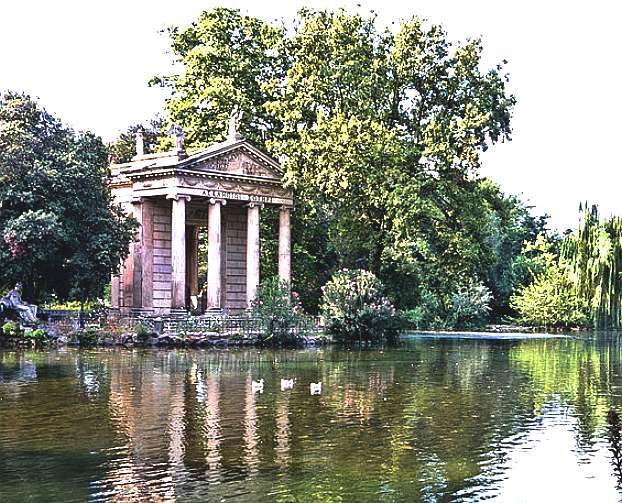
DEMOGRAPHICS
At the time of the Emperor Augustus, Rome was the largest city in the world: with a population of about one million people (about the size of London in the early 19th century, when London was the largest city in the
world).
After the fall of the Western Roman
Empire, the city's population fell dramatically to less than 50,000 people, and continued to either stagnate or shrink until the
Renaissance. When the Kingdom of Italy annexed Rome in 1870, the city had a population of about 200,000, which rapidly increased to 600,000 by the eve of World War I. The Fascist regime of Mussolini tried to block an excessive demographic rise of the city, but failed to prevent it from reaching one million people by early 1930s. After the Second World War, growth continued, helped by a post-war economic boom. A construction boom also created a large number of suburbs during the 1950s and 1960s.
In mid-2010, there were 2,754,440 residents in the city proper, while some 4.2 million people lived in the greater Rome area (which can be approximately identified with its administrative province, with a population density of about 800inhab./km2 stretching over more than 5,000 km²). Minors (children ages 18 and younger) totalled 17.00 percent of the population compared to pensioners who number 20.76 percent. This compares with the Italian average of 18.06 percent (minors) and 19.94 percent (pensioners). The average age of a Roman resident is 43 compared to the Italian average of 42. In the five years between 2002 and 2007, the population of Rome grew by 6.54 percent, while Italy as a whole grew by 3.56
percent. The current birth rate of Rome is 9.10 births per 1,000 inhabitants compared to the Italian average of 9.45 births.
Ethnic groups
According to the latest statistics conducted by ISTAT, approximately 9.5% of the population consists of non-Italians. About half of the immigrant population consists of those of various other European origins (chiefly Romanian, Polish, Ukrainian, and Albanian) numbering a combined total of 131,118 or 4.7 percent of the population. The remaining 4.8 percent are those with non-European origins, chiefly Filipinos (26,933), Bangladeshis (12,154), Peruvians (10,530), and Chinese (10,283).
The Esquilino district, off Termini Railway Station, has evolved into a largely immigrant neighbourhood, it is now seen as Rome's Chinatown, but in fact immigrants from more than a hundred different countries crowd its busy streets and piazzas. A thriving commercial district, Esquilino boasts dozens of restaurants featuring every kind of international cuisine. There are innumerable wholesale clothes shops: of the 1,300 or so commercial premises operating in the district 800 are Chinese-owned, around 300 are run by immigrants from other countries around the world and some 200 are owned by
Italians.
Hundreds of Romani gypsies live in illegal trailer camps on the city's outskirts. There is a growing population of homeless people in Rome, mostly not Italian and estimated at 7000.
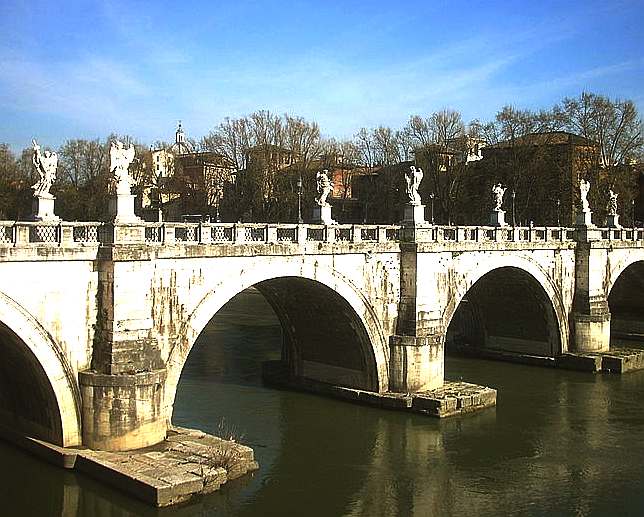
GOVERNMENT
Rome constitutes a comune speciale, named "Roma
Capitale", and is the largest both in terms of land area and population among the 8,101 comuni of Italy. It is governed by a mayor, currently Gianni Alemanno, and a city council. The seat of the comune is the Palazzo Senatorio on the Capitoline Hill, the historic seat of the city government. The local administration in Rome is commonly referred to as "Campidoglio", the Italian name of the hill.
Historical
subdivisions
Since 1972 the city has been divided into 19 (originally 20)
administrative areas, called municipi (sing. municipio) (until 2001 named
circoscrizioni). They were created for administrative reasons to increase decentralisation in the city. Each municipio is governed by a president and a council of four members who are elected by its residents every five years. The municipi frequently cross the boundaries of the traditional, non-administrative divisions of the city.
Rome is also divided into differing types of non-administrative units. The historic centre is divided into 22 rioni, all of which are located within the Aurelian Walls except Prati and
Borgo.
These originate from the Regiones of ancient Rome, which evolved in the Middle Ages into the medieval rioni. In the Renaissance, under Pope Sixtus V, they reached again the number of fourteen, and their boundaries were finally defined under Pope Benedict XIV in 1743.
A new subdivision of the city under Napoleon was ephemeral, and there were no sensible changes in the organisation of the city until 1870, when Rome became the third capital of Italy. The needs of the new capital led to an explosion both in the urbanisation and in the population within and outside the Aurelian walls. In 1874 a fifteenth rione, Esquilino, was created on the newly urbanised zone of Monti. At the beginning of the 20th century other rioni where created (the last one was Prati – the only one outside the Walls of Pope Urban VIII – in 1921). Afterward, for the new administrative subdivisions of the city the name "quartiere" was used. Today all the rioni, except Borgo and Prati, are part of the first Municipio, which therefore coincides almost completely with the historical city (Centro Storico).
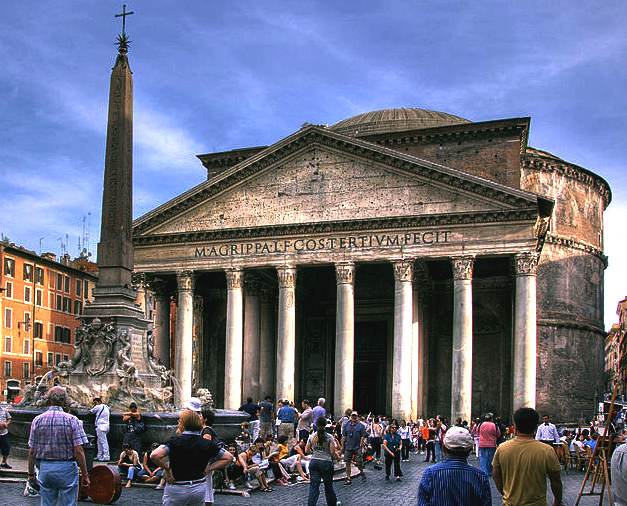
Provincial and regional government
Rome is the principal town of the homonymous Province, which includes the city's metropolitan area and extends further north until Civitavecchia. The Province of Rome is the 9th largest by area in Italy. At 5,352 square kilometres (2,066 sq mi), its dimensions are comparable to the region of Liguria. Moreover, the city is also the capital of the Lazio region.
National government
Rome is the national capital of Italy and is the seat of the Italian Government. The official residences of the President of the Italian Republic and the Italian Prime Minister, the seats of both houses of the Italian Parliament and that of the Italian Constitutional Court are located in the historic centre. The state ministries are spread out around the city; these include the Ministry of Foreign Affairs, which is located in Palazzo della Farnesina near the
Olympic stadium.
|
Gladiator
story
- Youtube
|
Colosseum
- Youtube
|
|
Rome
Travel Guide
- Youtube
|
10
things about Rome - Youtube
|
|
Rome
- Youtube
|
Rome
- Youtube
|
LINKS
and REFERENCE
-
http://demo.istat.it/pop2005
- ISTAT demographics
-
http://whc.unesco.org/en/list/91
- Entry about Rome on the official website of the
UNESCO World Heritace Centre
-
http://www.demauroparavia.it/125134
- De Mauro Paravia entry on "Urbe"
-
http://www.bbc.co.uk/weather/world/city_guides/results.shtml?tt=TT004000
- Entry on Rome on BBC
Weather website.
-
http://www.comune.roma.it/was/wps/portal/Walter_Veltroni/
- Personal profile on the official website of the
Comune di Roma
-
http://www.infrastrutturetrasporti.it/page/standard/site.php?p=cm&o=vh&id=146
- Roma Capitale on the official website of the
Italian Ministry for Infrastructures and
Transportation
-
http://www.camera.it/_dati/leg14/lavori/stampati/sk4000/articola/3885.htm
- Proposal of Constitutional Law on the official
website of the Camera
dei Deputati
-
http://demo.istat.it/strasa2005/
- ISTAT
demographics
-
http://www.comune.roma.it/was//ContentManagement//Consiglieri_Aggiunti.pdf
- Informative brochure on the official website of
the Comune di Roma
-
http://www.comune.roma.it/was/wps/portal/!ut/p/s.7_0_del_portale/Municipi/
- List of Municipi and definition of their
territories on the official website of the Comune di
Roma
-
http://www.difesa.it/SMD/COI/La+sede.htm
- Entry about the Centocelle Airport in the official
website of the Italian Ministero della Difesa
-
http://eurostar-av.trenitalia.com/progetto/stazioni_rinnovate/roma_tiburtina.html
- Entry on Roma Tiburtina station on the official
website of the Italian high-speed rail service (in
Italian)
-
http://www.liberazione.it/giornale/051129/LB12D6D0.asp
- Short newspaper article on the Rome / Achacachi
twinning
-
Hotel
Rome -A useful site provides information of the
hotels, sights, museums and history of Rome.
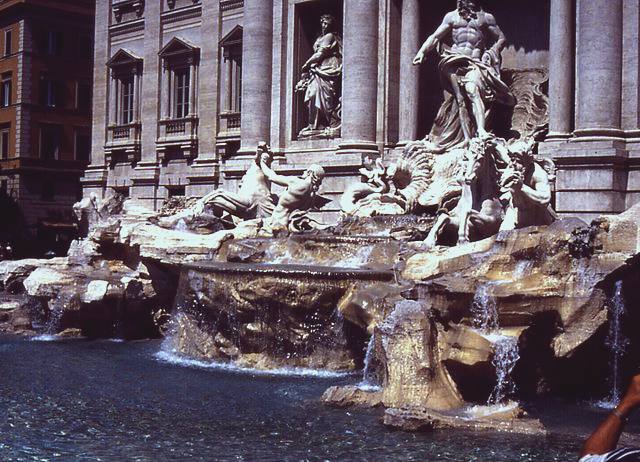
|
Adelaide
Aden
- Yemen
Afghanistan
Africa
Alaska
Albania
Algeria
Amazon
Rainforest
Amsterdam
Antarctic
- Scott
Arctic
North Pole
Argentina
Asia
Athens
Atlantis
- Plato's Lost City
Australia
Austria
Aztecs
- Mexico
Baghdad
Bahamas
Bahrain
Bangladesh
Barbados
Beachy
Head, England
Belgium
Benin
Berlin
Bermuda
Black
Rock Desert
Bohemia
Bolivia Bonneville
Utah History
Bonneville,
Utah, USA
Brazil
Brighton
- West Pier
British
Columbia
Buckingham
Palace
Bulgaria
Burkina
Faso
Burma
California
Canada
Canary
Islands
Cape
Horn
Cape
Verde
Cape
York - Au
Caribbean
Cayman
Islands
Central
Africa
Chichester
Harbour
Chile
China
Columbo
- Sri Lanka
Columbia
Corfu
Cowes,
Isle of Wight
Croatia
Crooked
Island, Bahamas
Cuba
Cyprus
Czechoslovakia
Darwin
- Australia
Daytona
Beach
Denmark
Eastbounre
Pier, England
Earthquakes
Ecuador
Egypt
Eindhoven Estonia
Equator
Europe
Falkland
Islands
Falmouth,
Cornwall
Fiji
Finland
Florida
France
Galapagos
Islands
Geography
Links
Geography
Mountains
Geography
Records
Geography
Resources
Geography
Statistics
|
Germany
Ghana
Gibraltar
- Links
Greece
Greenland
Guinea
Guinea
Bissau
Hawaii
Holland
the Nertherlands
Hollywood,
California, LA
Hong
Kong
Hungary
Hurricanes
Iceland
India
Indonesia
Links
Iran
Iraq
Ireland
Isle
of Man
Isle
of Wight
- The
Needles
Israel
Italy
Ivory
Coast
Jakarta
- Java
Jamaica
Japan
Johannesburg
Jordan
Kent,
England
Kenya
Korea
South Republic
Korea
North
Kuwait
Kyoto
Lanzarote,
Gran Canaria
Las
Vegas
Lebanon
Liberia
Libya
Liechtenstein
Life
on Earth
Lithuania
London
- Big
Ben
London
Eye
London
Houses
Parliament
London
- Buckingham
Palace
London
- Old
Bailey
London
- Overview
London
- The City
London
- Tower Bridge
London
- Trafalgar
Square
Luxembourg
Madame
Tussauds
Malaysia
Mali
Malta
Marshal
Islands
Mauritania
Maya
Empire -
Central America
Melbourne,
Australia
Middle
East
Mexico
Monaco
Morocco
Mountains
Mumbai
Naples-
Italy
National
Geographic
Nepal
New
York
New
Zealand
Niger
Nigeria
North
Africa
Norway
Nova
Scotia
Oceans
and Seas
Oman
Pakistan
Palermo
- Sicily
Palestine
Palma
- Malorca
|
Panama
Canal - Links
Paris
Pendine
Sands
Peru
Philippines
Pisa,
Leaning Tower
Planet
Earth
Poland
Port
Moresby - PNG
Port
Said - Egypt
Portugal
Puerto
Rico
Qatar
Quebec
Rio
de Janeiro
Romania
Rome
Russia
Salt
Lake City
Samoa
Saudi
Arabia
Scandanavia
Scotland
Senegal
Siera
Leone
Singapore
Solomon
Islands
Somalia
South
Africa
South
America
Southampton
Spain
- Espana
Sri
Lanka - Links
Stonehenge
Sudan
Suez
Canal
Sundancer
Holiday Resort
Sussex,
England Index
Sweden
Switzerland
Sydney,
Australia
Syria
Tahiti
- Polynesia
- Links
Tahitian
- Men & Women Customs
Taiwan
Thailand
The
Gambia
Togo
Tokyo,
Japan
Tonga
- Polynesia
Toronto
Trinidad
- Lesser Antilles
Trinidad
and Tobago
Tsunami
Tunbridge
Wells, England
Tunisia
Turkey
Tuvalu
Islands
UAE
- United Arab Emirates
UK
Statistics
Ukraine
United
Kingdom
United
Kingdom -
Gov
USA
Uruguay
Vanuatu
Islands
Vatican
City
Venezuela
Venice
Vienna
Vietnam
Volcanoes
Volendam
Wales
Washington
D.C.
WAYN
Where Are You Now
Wealden
iron industry
Wendover
West
Africa
World
Peace Supporters
Yemen
Yugoslavia
Zurich
|

Solar
Cola drinkers care about planet
earth
..
Thirst for Life

(330ml
Planet Earth can)
|







